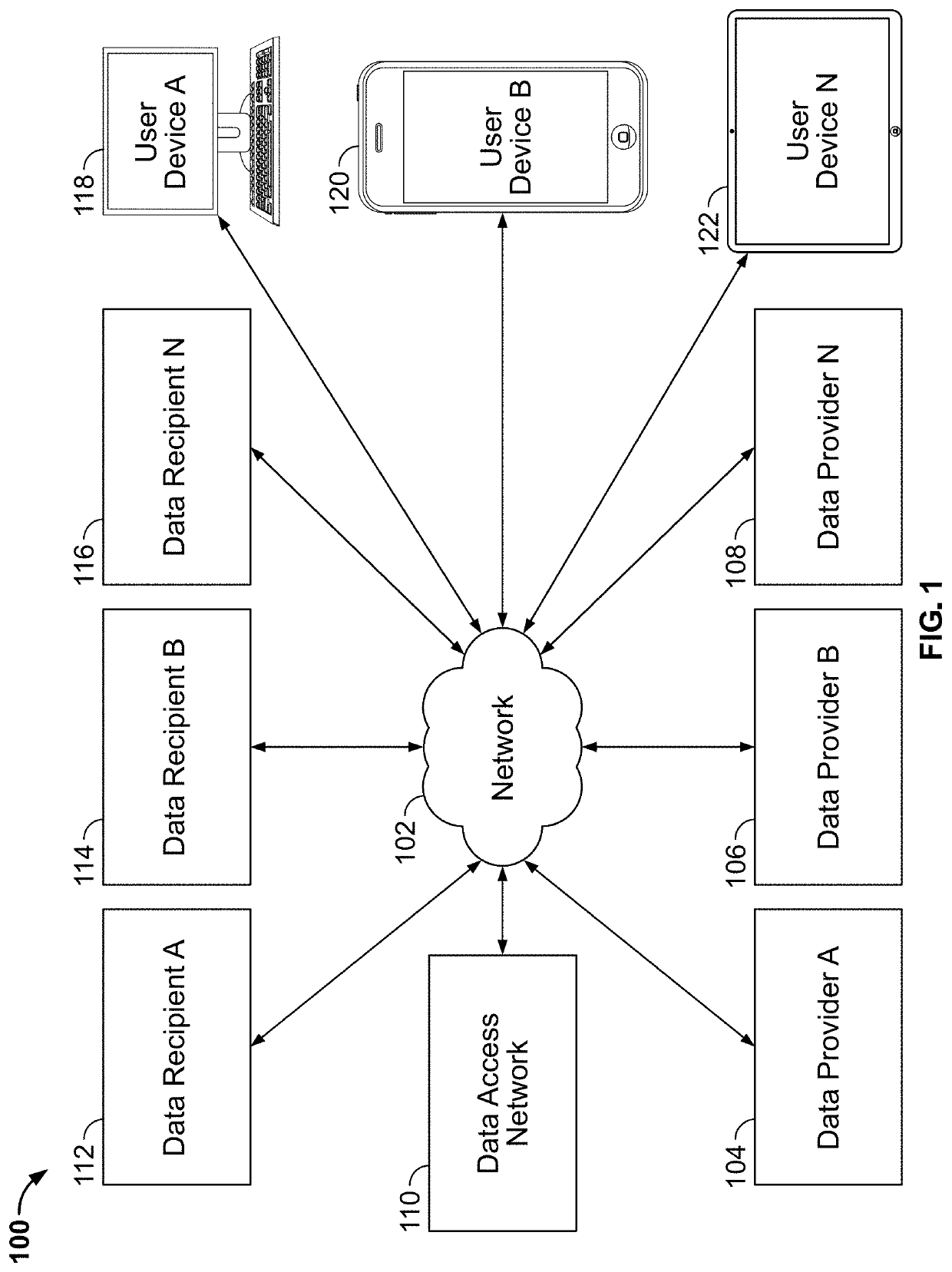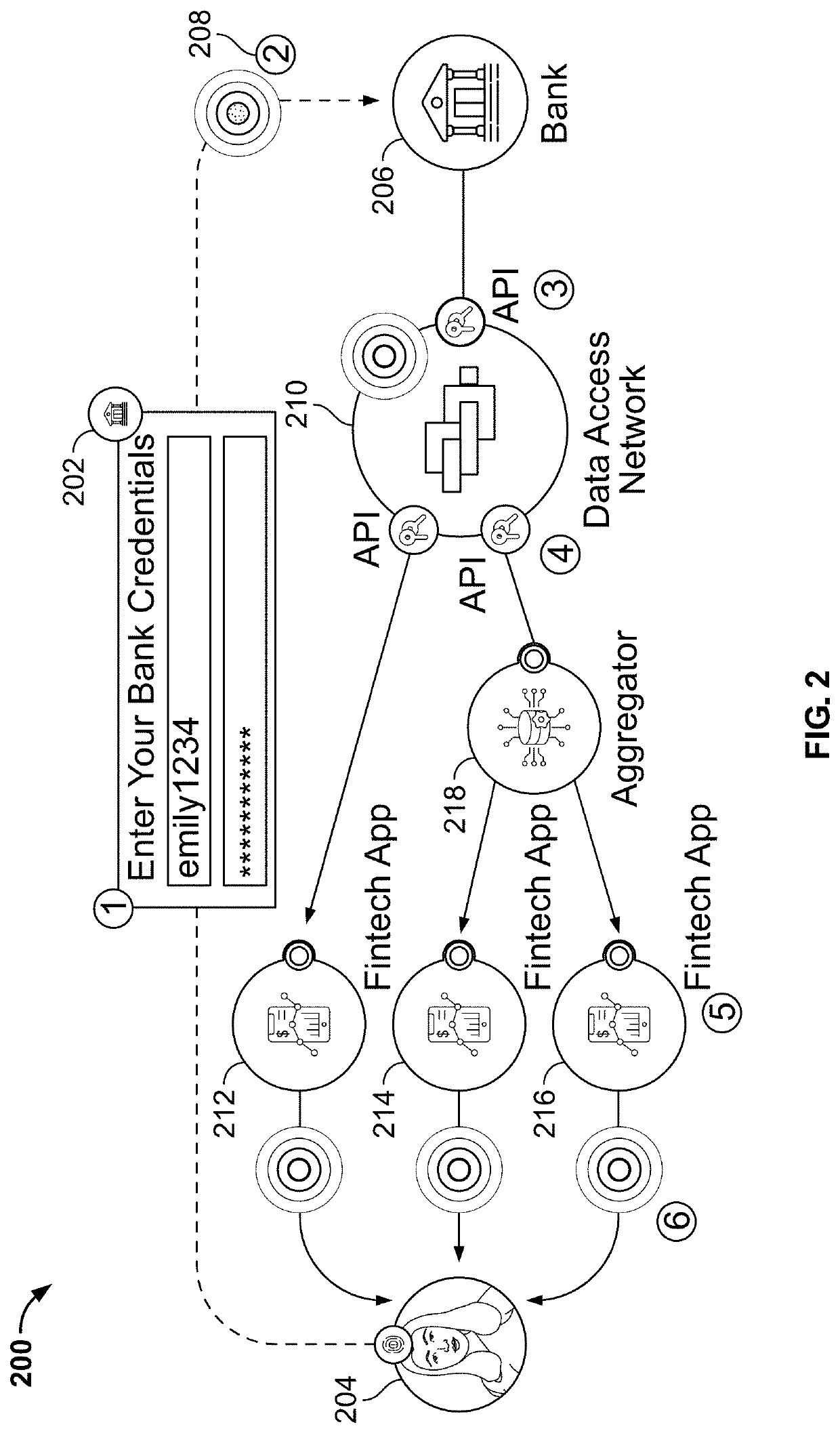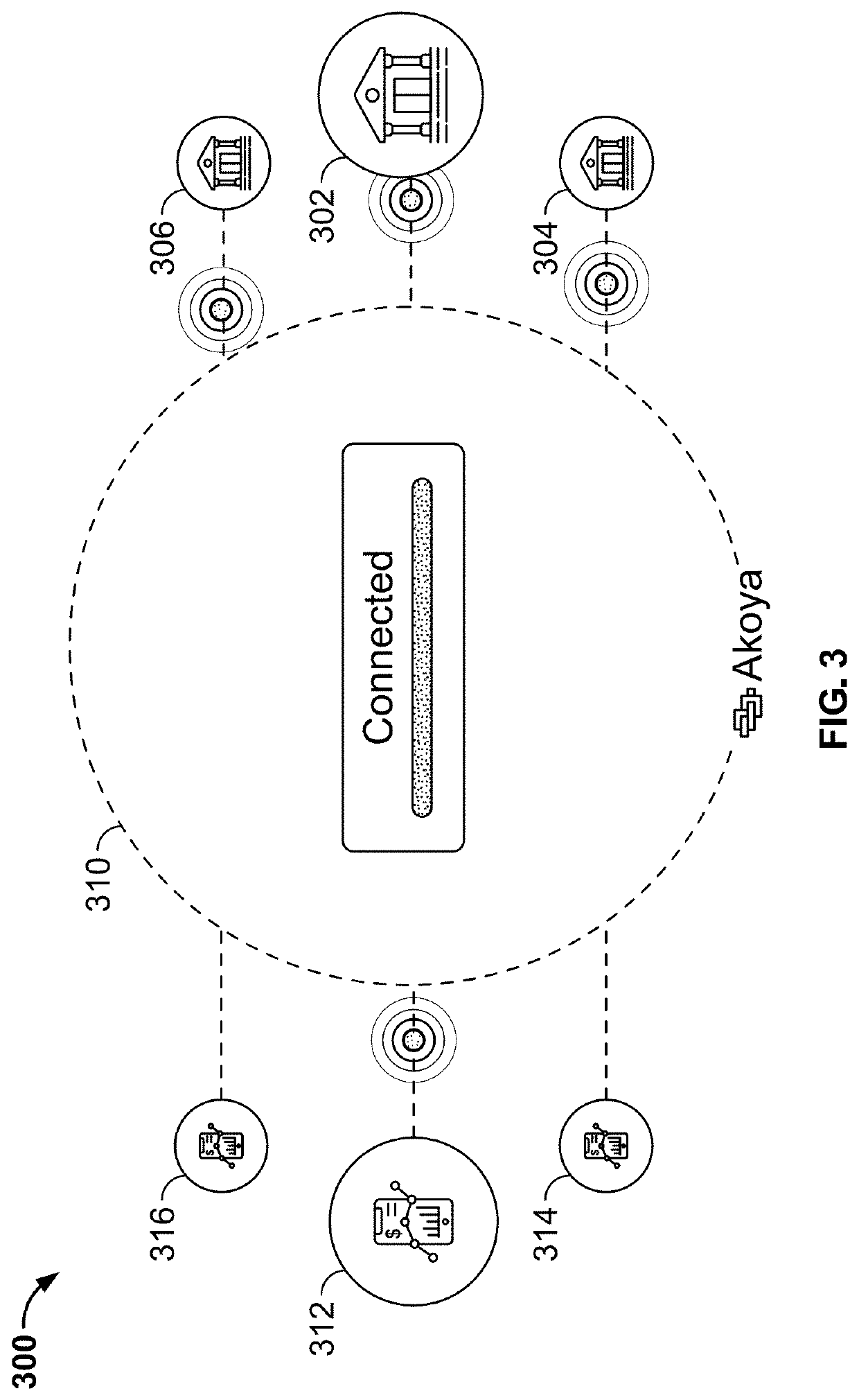Systems and methods for managing tokens and filtering data to control data access
a token management and data filtering technology, applied in the direction of digital data authentication, instruments, computing, etc., can solve the problems of requiring significant computing resources, exposing users to security and/or privacy risks with respect to personal information, and reducing the efficiency of data analysis
- Summary
- Abstract
- Description
- Claims
- Application Information
AI Technical Summary
Benefits of technology
Problems solved by technology
Method used
Image
Examples
Embodiment Construction
[0035]FIG. 1 shows a block diagram of an illustrative system 100 for selectively providing data to a data recipient, in accordance with some embodiments of this disclosure. System 100 includes one or more data providers 104, 106, 108 which may comprise servers and / or databases associated with a particular entity (e.g., a financial institution such as, for example, a bank). User devices 118, 120, 122 may be associated with a user (e.g., user 204 of FIG. 2) having an account with, or having purchased products associated with or offered by, one or more of data provider 104, 106, 108. For example, data provider 104 may store information related to a bank account of user 204, that user 204 previously subscribed to with data provider 104. Data access network 110 may be configured to act as an intermediary between data providers 104, 106, 108 and data recipients 112, 114, 116 (e.g., servers and / or databases associated with a financial services company, such as a fintech, an aggregator, RIA...
PUM
 Login to View More
Login to View More Abstract
Description
Claims
Application Information
 Login to View More
Login to View More - R&D
- Intellectual Property
- Life Sciences
- Materials
- Tech Scout
- Unparalleled Data Quality
- Higher Quality Content
- 60% Fewer Hallucinations
Browse by: Latest US Patents, China's latest patents, Technical Efficacy Thesaurus, Application Domain, Technology Topic, Popular Technical Reports.
© 2025 PatSnap. All rights reserved.Legal|Privacy policy|Modern Slavery Act Transparency Statement|Sitemap|About US| Contact US: help@patsnap.com



